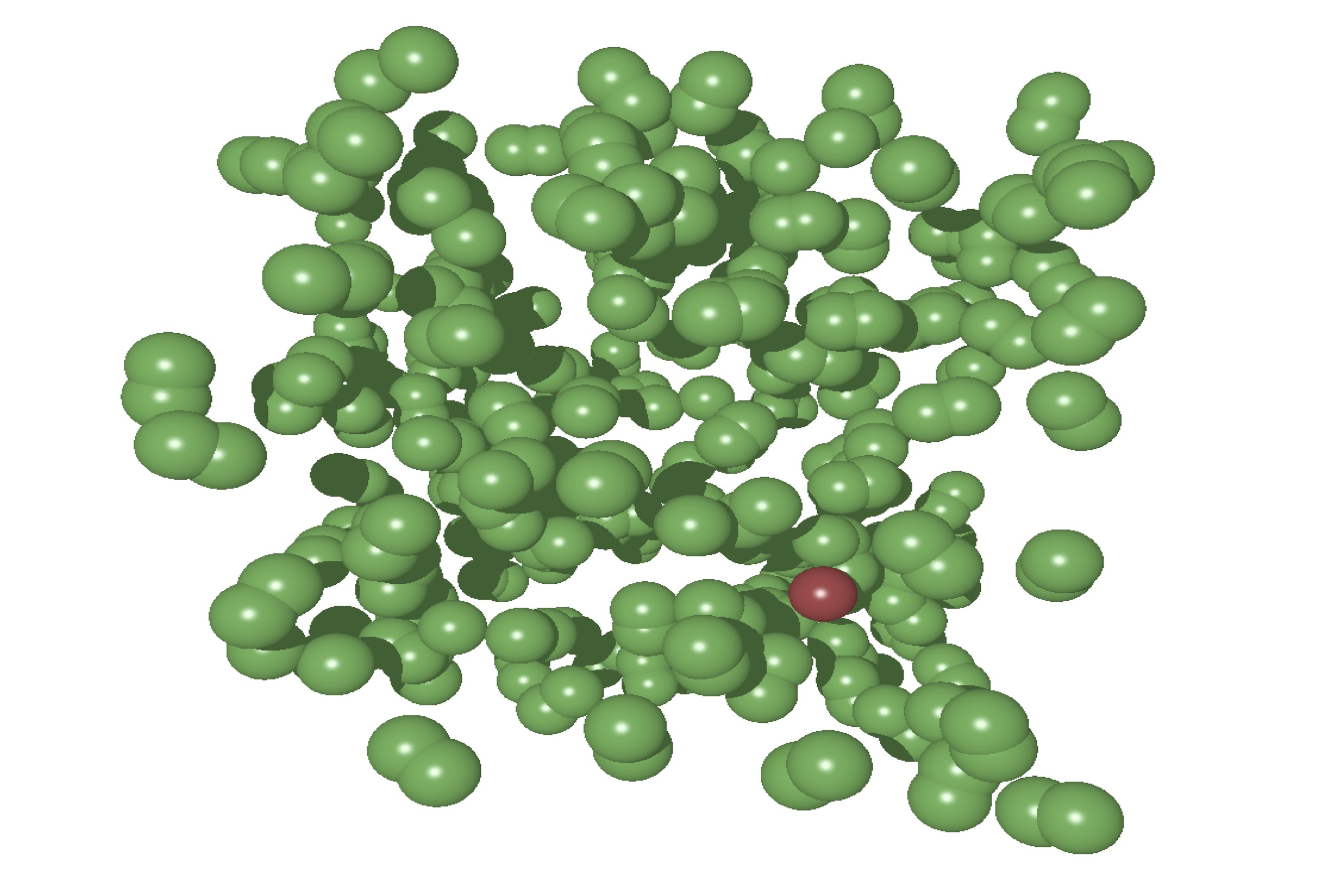
Active force-dipoles
Cells contain active proteins that can undergo conformational changes driven by catalytic chemical reactions. Experimental studies have shown that, compared to when their activity is suppressed, these proteins can enhance not only their own diffusion coefficients, but also those of passive tracer particles. Although the exact origins of this effect are unclear, various mechanisms have been suggested, e.g. force dipole interactions due to molecular motors which move along filaments and collective hydrodynamic effects caused by active proteins.
My research focuses on using computer simulations to
study this enhancement of the particle diffusion
coefficients, in order to understand how hydrodynamic
flow-fields driven by the motion of active particles can
affect the motion of passive particles and to elucidate
the important control parameters for the
effect.

